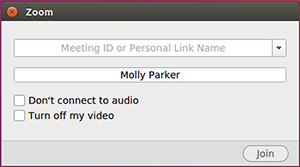The popularity of TV continued through the 1960s. Even COLOR tv shows became the norm by the end of the decade. Please watch the following clips:
From 1960's television shows:
The Andy Griffith Show (1960-1968)
Bewitched (1964-1972)
Gilligan's Island (1964-1967)
Mr. Ed (1961-1966)
The Addams Family (1964-1966)
Bonanza (1959-1973)
The Wild, Wild West (1965-1969)
The Flintstones (1960-1966)
Lost in Space (1965-1968)
Star Trek (1966-1969)
And please watch and read the following 2 tv episodes (look for the typical TV structure and make sure you see how it's working in the episode!):
Please read the script and then watch the episode: "Nightmare at 20,000 Feet" from The Twilight Zone (1963, season 5). As you watch, read the television script.
Then: Please read the article on Star Trek and the script/episode: "What Little Girls Are Made Of" by Robert Bloch. [See the assignment on our Google Classroom!]
TV Structure:
30-minute television episodes were generally divided into 3 acts (beginning, middle, end) with short advertisement breaks (commercials!)
Structure in a typical tv show:
From 1960's television shows:
The Andy Griffith Show (1960-1968)
Bewitched (1964-1972)
Gilligan's Island (1964-1967)
Mr. Ed (1961-1966)
The Addams Family (1964-1966)
Bonanza (1959-1973)
The Wild, Wild West (1965-1969)
The Flintstones (1960-1966)
Lost in Space (1965-1968)
Star Trek (1966-1969)
And please watch and read the following 2 tv episodes (look for the typical TV structure and make sure you see how it's working in the episode!):
Please read the script and then watch the episode: "Nightmare at 20,000 Feet" from The Twilight Zone (1963, season 5). As you watch, read the television script.
Then: Please read the article on Star Trek and the script/episode: "What Little Girls Are Made Of" by Robert Bloch. [See the assignment on our Google Classroom!]
TV Structure:
30-minute television episodes were generally divided into 3 acts (beginning, middle, end) with short advertisement breaks (commercials!)
Structure in a typical tv show:
- Beginning (Act 1)
- Prologue or teaser* (*a short scene that introduces the inciting incident)
- The main titles & intro.
- Status quo & the introduction of the first problem (exposition/rising action)
- Introduction of the subplot
- Act 1 will end with a complication or crisis for one of the protagonists or storylines
- Introducing a deadline into your narrative is called a "time-lock" in script writing
- Middle (Act 2)
- Development of the plot (rising action/crisis)
- Development of the subplot (rising action/crisis)--a subplot usually comments on the main plot in a different way (theme & variation). It also can be used to highlight a minor character or theme
- A turning point (crisis) where the story takes an unexpected turn is dealt with in the second act
- Act II usually ends with a dark moment for the protagonist--who now knows what they need to do (epiphany/enlightenment) to overcome their problem (in a mystery, for example, the detective figures out who the killer is and must confront the criminal, etc.)
- End (Act 3)
- Resolution of the subplot
- An enlightenment (if it did not occur in Act 2) for the protagonist (in a mystery, for example, the detective figures out who the killer is and must confront the criminal, etc.)
- Climax (protagonist and antagonist meet or fight to resolve the problem)
- Resolution (return to status quo)






